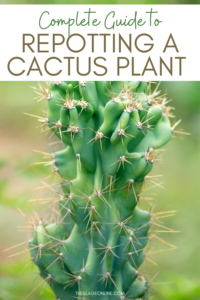Prickly Pear Cactus, known scientifically as Opuntia, is a fascinating and versatile succulent that thrives in arid climates. Revered for its vibrant flowers and delectable fruit, the Prickly Pear is equally valued for its resilience and adaptability. This guide provides a comprehensive step-by-step approach to planting and cultivating Prickly Pear Cactus, ensuring a fruitful gardening experience.
Understanding the characteristics and natural habitat of the Prickly Pear is essential. Native to the Americas, this cactus flourishes in regions characterized by sandy or well-drained soils. It requires minimal water and can withstand significant temperature fluctuations. As a drought-tolerant plant, Prickly Pear not only beautifies landscapes but also generates edible pads and fruits known as “tunas.”
Embarking on the journey of growing Prickly Pear Cactus invites a deeper connection to nature. With care and consideration, this succulent can flourish in gardens, containers, or xeriscapes, contributing both aesthetically and nutritionally.
Choosing the Right Variety
Before delving into the planting process, one must consider the various species of Prickly Pear Cactus. Depending on the climate and intended use, select a variety that aligns with specific needs. Common types include:
• **Opuntia ficus-indica**: This is perhaps the most widely cultivated species, known for its fruit production and large, paddle-shaped pads.
• **Opuntia engelmannii**: Renowned for its striking yellow flowers, this species is suitable for ornamental purposes.
• **Opuntia basilaris**: Often referred to as the “Beavertail Cactus,” this variety is characterized by its flattened pads and impressive blooms.
Familiarizing oneself with these varieties enhances the potential for success based on personal gardening goals.
Optimal Planting Conditions
Creating an ideal environment for the Prickly Pear Cactus enhances its growth potential. Here are the critical factors to consider:
• **Sunlight**: Prickly Pears thrive in full sun, demanding at least six hours of direct sunlight daily. An open, sun-drenched area is simultaneously beneficial for both growth and bloom production.
• **Soil**: Focus on well-draining soil to prevent waterlogging. A mixture of sand, gravel, and potting soil serves as an excellent growing medium. The goal is to achieve a combination of sufficient nutrients while ensuring quick drainage.
• **Temperature**: While Prickly Pears are tolerant of heat, they can also withstand mild frost. However, consistently low temperatures may stress the plant, so be cautious during severe winter months.
• **Watering**: Although Prickly Pear Cacti are drought-tolerant, proper watering practices are crucial, especially when establishing roots. During the growing season, water thoroughly, allowing the soil to dry completely between waterings.
Preparing for Planting
Preparation is key to a successful planting experience. Follow these preparatory steps:
• **Gathering Tools and Materials**: Equip yourself with gardening gloves, pruning shears, a trowel, and a container, if desired. Ensure the pot includes drainage holes to accommodate the plant’s needs.
• **Cactus Pads**: If propagating from pads, select healthy, mature pads. Allow them to callous over for a few days to reduce the risk of rot when planted. This process involves placing the pads in a dry, warm spot.
• **Location Selection**: Choose an appropriate location based on the environmental conditions previously outlined.
The Planting Process
With the preparation complete, it’s time to plant the Prickly Pear Cactus:
• **Digging the Hole**: Create a hole approximately twice the diameter of the pad or root system. The hole should be deep enough to accommodate the roots without overcrowding.
• **Planting**: Place the pad upright in the hole, ensuring the bottom is buried slightly in the soil. If planting roots, ensure they extend horizontally within the pit. Fill the hole gently with soil, ensuring no air pockets remain around the roots.
• **Initial Watering**: After planting, water the cactus lightly to settle the soil around the roots. Avoid soaking it, as excessive moisture could lead to rot.
Ongoing Care and Maintenance
Successful growth depends on the dedication to ongoing care and maintenance:
• **Mulching**: Apply a light layer of gravel or crushed stone around the base of the plant. This improves drainage and helps maintain soil temperature.
• **Pruning**: Regularly remove any dead or damaged pads to promote healthy growth and airflow. Wear gloves during this process to avoid injury from the spines.
• **Fertilizing**: Use a low-nitrogen cactus fertilizer during the growing season to encourage vibrant growth and blooming.
Harvesting and Utilizing Prickly Pear
Once established, the Prickly Pear Cactus rewards gardeners with an abundance of pads and fruit. The pads can be harvested and cooked, offering a delightful addition to salads, tacos, or frying. The fruit, known as tunas, are not only colorful but also rich in vitamins and antioxidants. They can be eaten fresh, made into jellies, or used in beverages. Harvesting requires caution due to the cactus spines, so gloves are a must.
In conclusion, planting and nurturing Prickly Pear Cactus is a gratifying endeavor that contributes beauty and utility to both gardens and culinary arts. Following these comprehensive steps will yield a thriving and fruitful cactus, embodying resilience and vibrancy. As you engage with this remarkable plant, you will undoubtedly foster a connection to the enchanting world of succulents, making every gardening effort worthwhile.




Leave a Comment